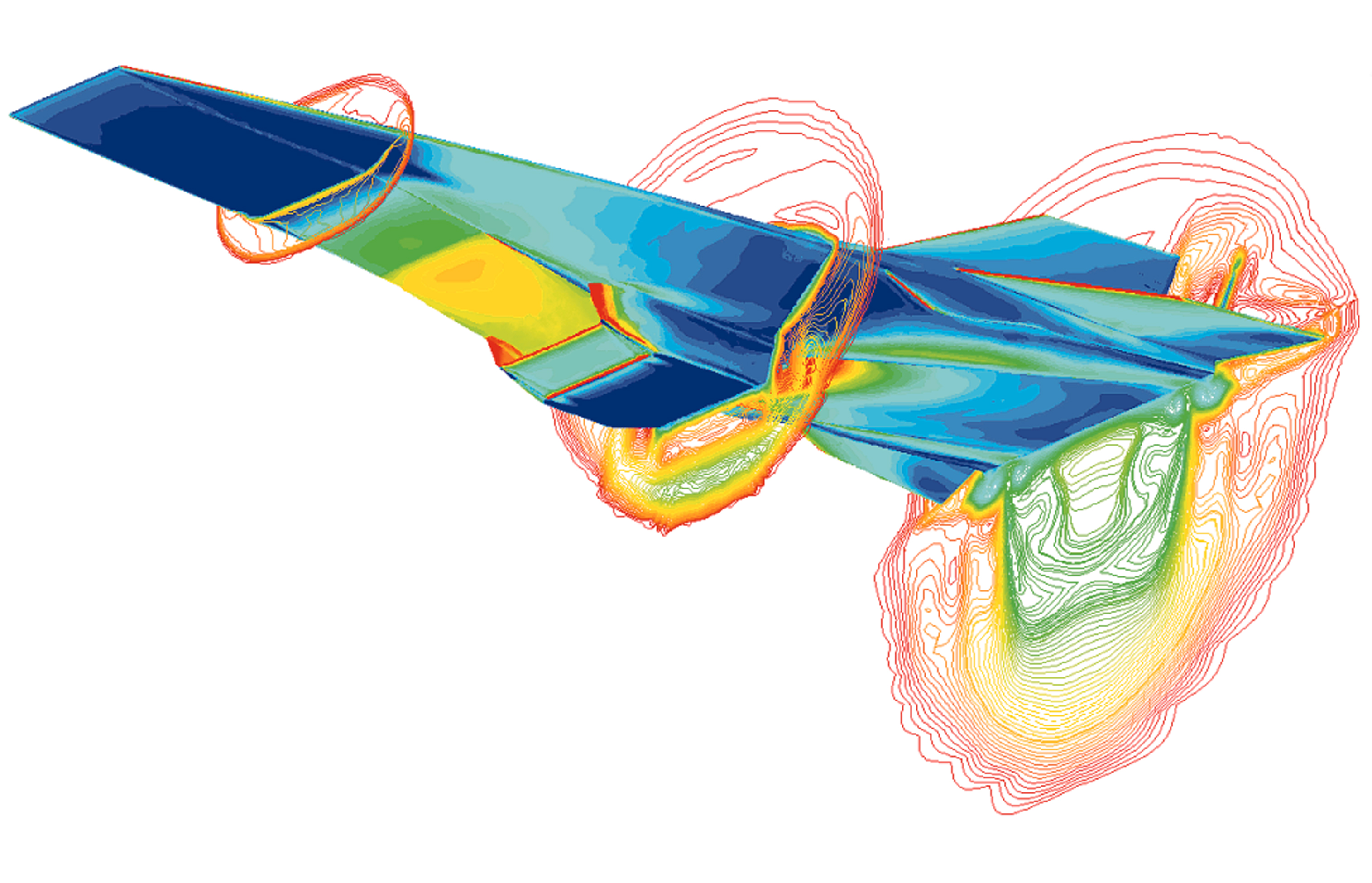Explore: Unsteady Reacting Flows
Discover books, insights, and more — all in one place.
Learn more about Unsteady Reacting Flows with top reads curated from trusted sources — all in one place.
AI-Generated Overview About “unsteady-reacting-flows”:
Books Results
Source: The Open Library
The Open Library Search Results
Search results from The Open Library
1Multiple-cycle simulation of a pulse detonation engine ejector
By Shaye Yungster
“Multiple-cycle simulation of a pulse detonation engine ejector” Metadata:
- Title: ➤ Multiple-cycle simulation of a pulse detonation engine ejector
- Author: Shaye Yungster
- Language: English
- Publisher: ➤ National Aeronautics and Space Administration, Glenn Research Center - Available from NASA Center for Aerospace Information
- Publish Date: 2002
- Publish Location: ➤ [Cleveland, Ohio] - Hanover, MD
“Multiple-cycle simulation of a pulse detonation engine ejector” Subjects and Themes:
Edition Identifiers:
- The Open Library ID: OL17621363M - OL18838739M - OL18216551M - OL16112465M
- Online Computer Library Center (OCLC) ID: 56350949
Access and General Info:
- First Year Published: 2002
- Is Full Text Available: No
- Is The Book Public: No
- Access Status: No_ebook
Online Access
Downloads Are Not Available:
The book is not public therefore the download links will not allow the download of the entire book, however, borrowing the book online is available.
Online Borrowing:
Online Marketplaces
Find Multiple-cycle simulation of a pulse detonation engine ejector at online marketplaces:
- Amazon: Audiable, Kindle and printed editions.
- Ebay: New & used books.
Wiki
Source: Wikipedia
Wikipedia Results
Search Results from Wikipedia
Computational fluid dynamics

apply to flows with a time-varying mean flow because these equations are 'time-averaged'. In fact, statistically unsteady (or non-stationary) flows can equally
Hypersonic speed

hypersonic flows (usually defined as those with a Knudsen number above 0.1) do not follow the Navier–Stokes equations.[citation needed] Hypersonic flows are
In aerodynamics, hypersonic speed refers to speeds much faster than the speed of sound, usually more than approximately Mach 5. The precise Mach number at which a craft can be said to be flying at hypersonic speed varies, since individual physical changes in the airflow (like molecular dissociation and ionization) occur at different speeds; these effects collectively become important around Mach 5–10. The hypersonic regime can also be alternatively defined as speeds where specific heat capacity changes with the temperature of the flow as kinetic energy of the moving object is converted into heat.
Compressible flow
Compressible flow (or gas dynamics) is the branch of fluid mechanics that deals with flows having significant changes in fluid density. While all flows are compressible
John Dabiri

mechanical engineering. His academic research focuses on unsteady fluid mechanics and flow physics, with applications in biology, renewable energy, and
Hydrodynamic stability
further onto more complex flows. Since the 1980s, more computational methods are being used to model and analyse the more complex flows. To distinguish between
Droplet-based microfluidics
amount of starting materials react. This can be accomplished by using a windy channel to facilitate unsteady laminar flow within the droplets. Surfactants
SU2 code
treat more general equations such as electrodynamics and chemically reacting flows. SU2 supports continuous and discrete adjoint for calculating the
Combustion

hundreds of chemical species reacting according to thousands of reactions. The inclusion of such mechanisms within computational flow solvers still represents
Combustion, or burning, is a high-temperature exothermic redox chemical reaction between a fuel (the reductant) and an oxidant, usually atmospheric oxygen, that produces oxidized, often gaseous products, in a mixture termed as smoke. Combustion does not always result in fire, because a flame is only visible when substances undergoing combustion vaporize, but when it does, a flame is a characteristic indicator of the reaction. While activation energy must be supplied to initiate combustion (e.g., using a lit match to light a fire), the heat from a flame may provide enough energy to make the reaction self-sustaining. The study of combustion is known as combustion science. Combustion is often a complicated sequence of elementary radical reactions. Solid fuels, such as wood and coal, first undergo endothermic pyrolysis to produce gaseous fuels whose combustion then supplies the heat required to produce more of them. Combustion is often hot enough that incandescent light in the form of either glowing or a flame is produced. A simple example can be seen in the combustion of hydrogen and oxygen into water vapor, a reaction which is commonly used to fuel rocket engines. This reaction releases 242 kJ/mol of heat and reduces the enthalpy accordingly (at constant temperature and pressure): 2 H 2 ( g ) + O 2 ( g ) → 2 H 2 O ↑ {\displaystyle {\ce {2H_{2}(g){+}O_{2}(g)\rightarrow 2H_{2}O\uparrow }}} Uncatalyzed combustion in air requires relatively high temperatures. Complete combustion is stoichiometric concerning the fuel, where there is no remaining fuel, and ideally, no residual oxidant. Thermodynamically, the chemical equilibrium of combustion in air is overwhelmingly on the side of the products. However, complete combustion is almost impossible to achieve, since the chemical equilibrium is not necessarily reached, or may contain unburnt products such as carbon monoxide, hydrogen and even carbon (soot or ash). Thus, the produced smoke is usually toxic and contains unburned or partially oxidized products. Any combustion at high temperatures in atmospheric air, which is 78 percent nitrogen, will also create small amounts of several nitrogen oxides, commonly referred to as NOx, since the combustion of nitrogen is thermodynamically favored at high, but not low temperatures. Since burning is rarely clean, fuel gas cleaning or catalytic converters may be required by law. Fires occur naturally, ignited by lightning strikes or by volcanic products. Combustion (fire) was the first controlled chemical reaction discovered by humans, in the form of campfires and bonfires, and continues to be the main method to produce energy for humanity. Usually, the fuel is carbon, hydrocarbons, or more complicated mixtures such as wood that contain partially oxidized hydrocarbons. The thermal energy produced from the combustion of either fossil fuels such as coal or oil, or from renewable fuels such as firewood, is harvested for diverse uses such as cooking, production of electricity or industrial or domestic heating. Combustion is also currently the only reaction used to power rockets. Combustion is also used to destroy (incinerate) waste, both nonhazardous and hazardous. Oxidants for combustion have high oxidation potential and include atmospheric or pure oxygen, chlorine, fluorine, chlorine trifluoride, nitrous oxide and nitric acid. For instance, hydrogen burns in chlorine to form hydrogen chloride with the liberation of heat and light characteristic of combustion. Although usually not catalyzed, combustion can be catalyzed by platinum or vanadium, as in the contact process.
John Frederick Clarke
analytical work on the gas dynamics of reacting flows. He has shown how, in the presence of solid boundaries, flows are affected by dissociation, heat conduction
Hydraulic shock

of the following features: Multiphase flow capabilities. An algorithm for cavitation growth and collapse. Unsteady friction: the pressure waves dampen as